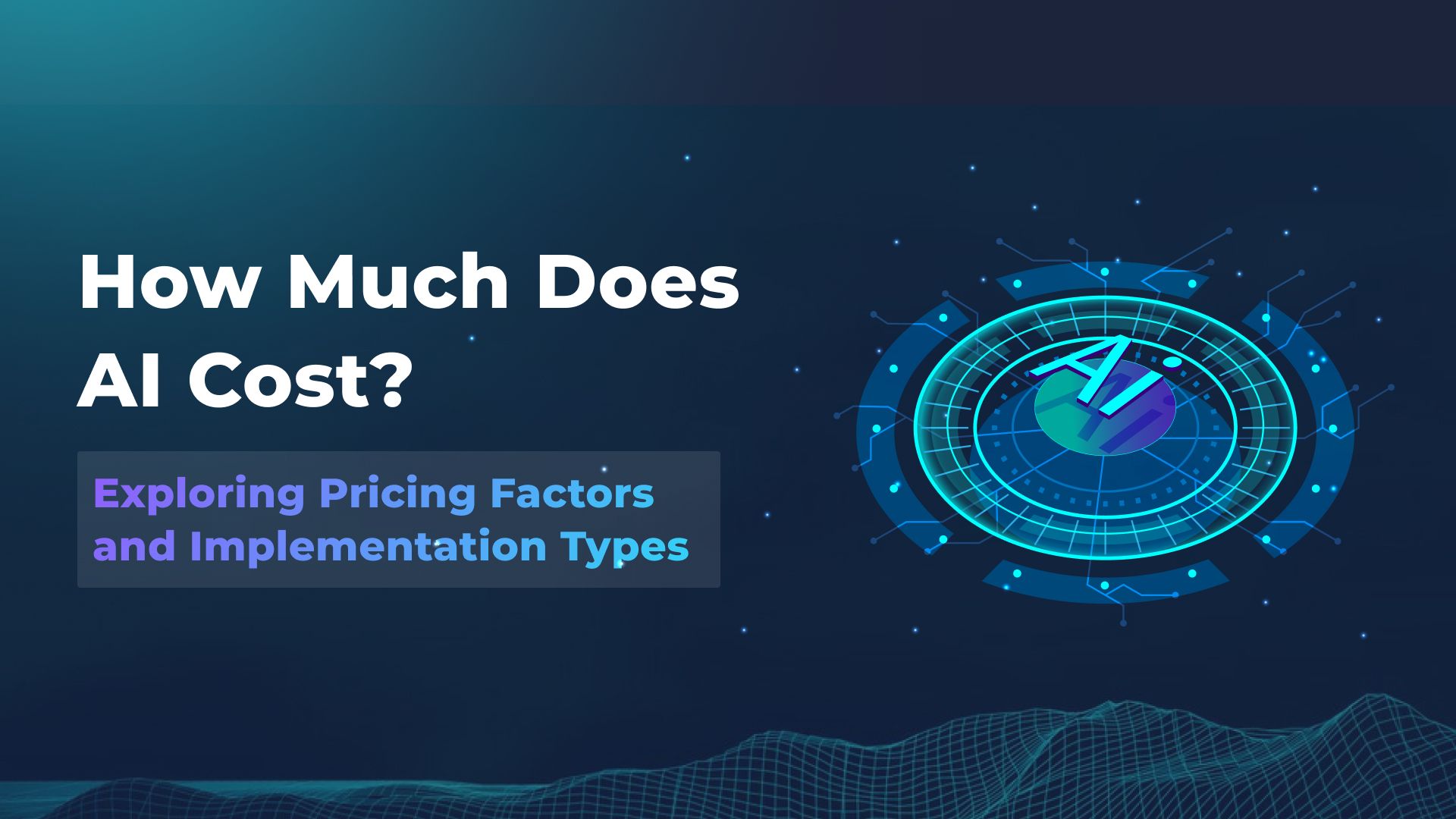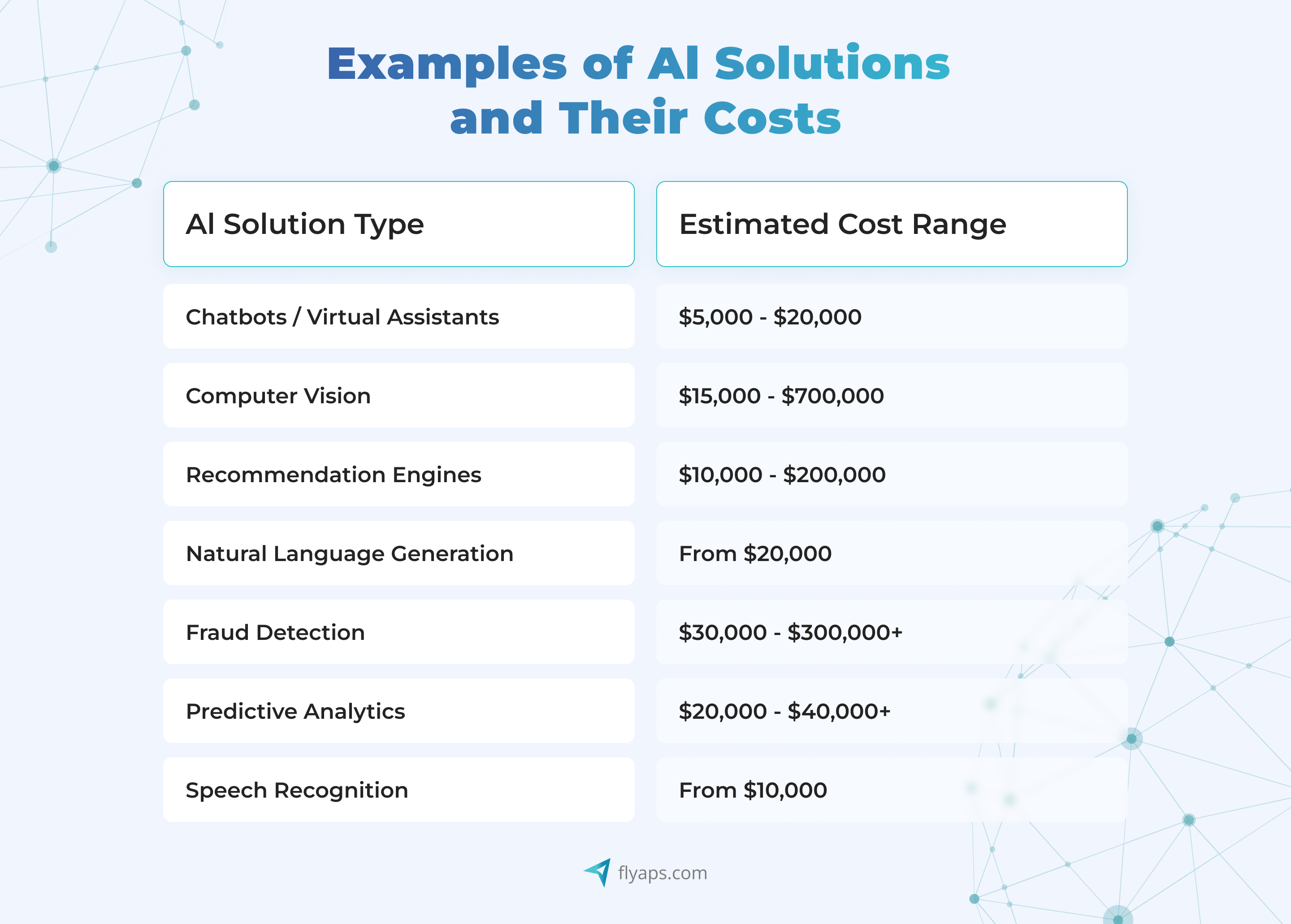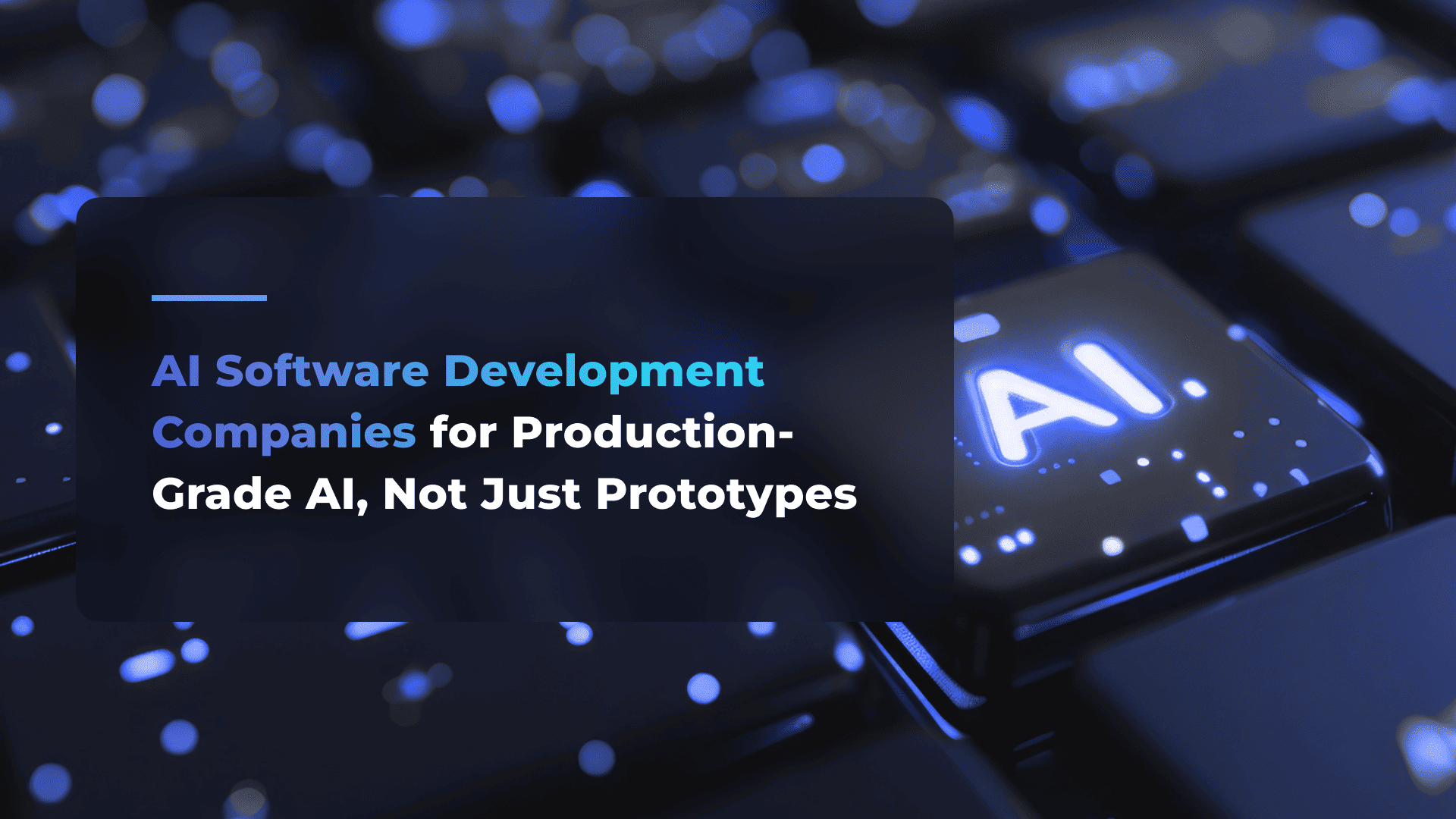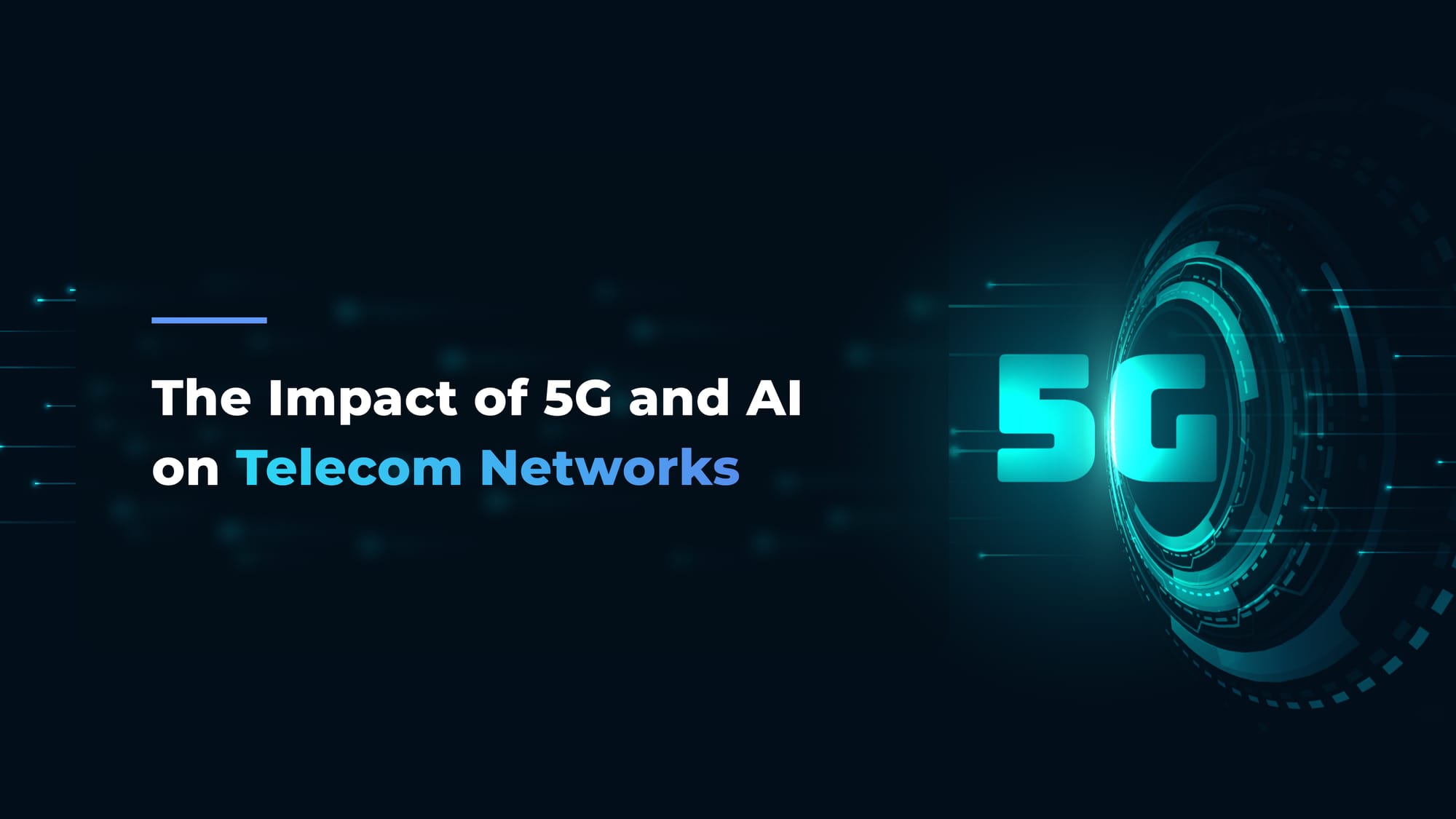How Much Does AI Cost to Make in 2025? A Price Breakdown You Can Actually Use

The cost of AI depends heavily on the use case. AI projects usually fall into one of these scenarios:
- Building a bespoke deep learning model from scratch
- Adapting a pre-trained model to your specific data and needs (fine-tuning)
- Integrating an AI-powered feature into your app via an API or existing tool
Each comes with a very different cost structure. For example, developing a brand-new AI model in-house requires data scientists, research efforts, and significant computing resources. Meanwhile, using a third-party API like OpenAI’s GPT-4 shifts the cost to pay-per-use fees and integration work. That’s why AI prices can vary widely, from $5,000 to over $300,000.

In this article, AI developers at Flyaps share everything you need to know about AI cost: the cost ranges of different AI systems, cost breakdowns for in-house vs. outsourced AI implementation, and key tips to keep your AI project budget lower when possible.
Let’s start with the average price ranges for AI systems in 2025 to see how much AI costs.
How much does AI software cost in 2025?
Now to the question “How much is AI?” that bugs many businesses. Clutch.co analyzed AI development projects and found that the cost of artificial intelligence projects typically falls between $10,000 and $49,999.
The company also outlined average cost metrics based on real project data:
| Average AI development project cost |
| 📊 $120,595 – average project cost |
| ⏳ 10 months – average timeline |
| 💵 $11,553 – average monthly cost |
These numbers give a general idea of AI software price, but the answer to the eternal question “How much does artificial intelligence cost?” is still vague. To solve this, let’s consider the 7 main aspects that define AI development cost.
7 factors that define the final price of an AI project
Artificial intelligence pricing depends on these 7 key factors:
- Type of AI solution. Should it create text, image, or video?
- Project complexity. How intricate is the solution?
- Tools & infrastructure. What resources and technology are needed?
- Data. What’s the size of your data, and how clean is it?
- Training. How much fine-tuning is needed?
- Implementation choice. In-house development vs outsourcing.
- Deployment & maintenance. Scaling and ongoing monitoring costs
Let’s look at each of them.
Type of AI solution
The type of AI system is the first thing that impacts the cost. What should your AI system work with – text, image, audio, or all of them?
“The AI 'subject' usually impacts both the implementation and maintenance costs. By 'subject', we mean the product created by the AI algorithm, like text, images, audio, or video. For example, text is typically cheaper to work with compared to audio or video.”
Here's a quick overview of the different types of AI systems and their costs:
| Type of AI solution | What it does | Cost range |
| Chatbots | Automates customer support by answering questions | $5,000 - $20,000 |
| Image recognition | Analyzes images for face or object recognition | $15,000 - $200,000+ |
| Recommendation engines | Suggests products based on user preferences | $10,000 - $200,000+ |
| Natural Language Generation (NLG) | Turns data into human-readable text | $20,000 - $200,000+ |
| Fraud detection & prevention | Detects fraud by analyzing transactions in real-time | $30,000 - $300,000+ |
| Predictive analytics | Predicts future trends to help with decision-making | $20,000 - $40,000+ |
| Speech recognition | Converts spoken language into text | $10,000 - $30,000+ |
As you can see, the prices for AI systems vary significantly based on the complexity of the solution.
Our experience at Flyaps shows that many businesses can meet their needs faster and more cost-effectively by integrating pre-built AI tools, rather than developing features from scratch. That’s why we’ve created 6 pre-built AI solutions, each tailored to a specific industry, such as content creation, recruitment, logistics, and retail:
We help clients select the right gen AI model, customize it with their data, create a Proof of Concept, and deploy the solution in the best hosting environment. Each solution is adapted to a specific AI use case, maximizing efficiency while keeping costs low.
Don’t start from scratch – use our pre-built AI tools.
See our AI servicesProject complexity
Complexity is one of the biggest cost drivers. The more features, integrations, and customizations your project demands, the more time, expertise, and resources it will take to deliver, which naturally increases the final price.
Here’s what adds to AI development project complexity (and cost):
| How does AI project complexity increase the cost? |
More functionality = more development = higher costs |
Simple classifiers are cheap; deep learning models are expensive |
Huge, messy, or sensitive datasets require more work |
Building from scratch instead of using libraries adds time and cost |
Connecting APIs, CRMs, ATS, cloud services takes extra effort |
Intuitive UX requires specialized design work |
More sophisticated systems need regular updates and monitoring |
A complex project can blow the budget several times, so a small MVP focused on one core feature is the best way to start AI development.
Case in point: How GlossaryTech nailed complexity without the cost
A good example of managing complexity without exploding the budget is our work with GlossaryTech, an HR tech startup.
They came to us with a clear but challenging task: build a Chrome extension that could instantly scan resumes, recognize IT terms (even tricky ones like "Go" or "Ruby on Rails"), classify them by domain (backend, frontend, DevOps, and so on), and provide simple definitions. Off-the-shelf tools weren't enough — they needed something custom, fast, and accurate.
To tackle this, we combined open-source technology (like the NLTK Python library) with custom engineering. We developed our own tokenizer specialized for tech terms, allowing the system to handle multi-word expressions precisely and speed up processing dramatically.
Instead of building a giant, complex ML model from scratch, we optimized lightweight NLP techniques to achieve fast, reliable results without unnecessary complexity.
Thanks to our approach, GlossaryTech ended up with a highly effective tool that today is used by recruiters at Amazon, Tesla, and Microsoft, featured by Google, and downloaded over 25,000 times — all without burning through their startup budget.
Start with a Minimum Viable Product before full-scale AI development. Launch it fast, gather user feedback, and improve based on what users need.
Tools and infrastructure
The tools and infrastructure you choose for AI development (like cloud services, hardware, and software) can significantly affect your final price.
| Key infrastructure factors that affect AI costs |
AWS, GCP, and Azure pricing models vary greatly |
Dedicated servers vs managed cloud services |
GPU-based systems are faster but costlier |
Poor optimization = higher ongoing costs |
Reduce manual work, increase scalability, and save money in the long run |
AI development projects have higher infrastructure costs than regular software projects because training and running AI models require powerful hardware, large storage, and sometimes expensive GPU acceleration.
But for many projects, infrastructure isn't the main cost driver, except when GPU inference is involved. If your AI solution needs to run on GPUs to maintain performance, cloud bills can quickly get out of control as you scale.
Case in point: Urban planning platform drops cloud costs by 40% after infrastructure optimizations
Take UrbanSim, for example. The company was looking to modernize its ML-based platform for running large-scale urban planning simulations. Their infrastructure was becoming a serious problem: simulations were running on a manually managed cloud setup that was heavily over-provisioned, leading to skyrocketing costs and low performance.
To fix this, our engineers transitioned UrbanSim to GKE Autopilot, a fully managed Kubernetes environment that automatically adjusts resources based on actual demand. We also introduced additional optimizations like switching to spot instances for cheaper compute, right-sizing, and scaling down oversized resources.
As a result, UrbanSim’s cloud costs dropped by 40%, saving them thousands of dollars each month. On top of that, the platform became roughly 10 times cheaper to host compared to their original setup.
Evaluate if GPU acceleration is necessary for your model before you scale. If needed, optimize training by using a GPU on demand within a Kubernetes cluster.
Data size & quality
AI development relies heavily on high-quality data. If you already have clean, well-structured data, the development process is much cheaper and faster. But if your data is messy, inconsistent, or poorly formatted, it requires significant time and resources to clean and structure before it can be used effectively. This cleaning process often involves identifying duplicates, correcting errors, and organizing unstructured data, all of which drive up the cost.
There are 4 main scenarios concerning data:
- You have clean, labeled data. = The project is faster and cheaper to develop.
- You have messy or inconsistent data. = Extra time is needed for cleaning and validation.
- You have rare or sensitive data. = Costs rise due to data collection efforts and compliance checks.
- You need real-time data updates. = Additional infrastructure needed, increasing complexity and budget.
While data сhaos can significantly increase the cost of an AI project, some techniques can mitigate these costs.
Here are 3 main things to do to solve the data problem:
- Conduct data audits and early cleaning. The best approach is to prepare your data before starting the AI development process. By cleaning your data at the outset, you can save on the expensive step of fixing model errors caused by bad data.
- Automate data preprocessing. Some tools can automate the data cleaning process. From using scripts to remove duplicates to deploying algorithms that can spot inconsistencies in real-time, automation can save both time and money. For instance, building a custom data pipeline that handles these issues can speed up the process and ensure that data is ready for AI models without extensive manual intervention.
- Build tailored AI models. In cases like HotNights, where supplier data is inconsistent and messy, a general AI model like GPT-3.5 can’t fully solve the problem. So we built a custom AI model that was specifically designed to understand and process the client’s unique data, accurately identifying and correcting errors. This made the entire process much more efficient and helped reduce the long-term costs of retraining or fixing the model.
If you want to avoid surprises, audit your data early. Better data = faster delivery = lower costs.
Training the algorithm
Training an AI model, especially deep learning ones, isn’t quick or cheap. It requires a lot of time, computational resources, and, most importantly, clean, annotated data. The more complex the data (like video), the more time-consuming and expensive the process will be.
| What drives AI training costs |
Time-consuming and expensive, especially for large datasets. |
Deep learning models require high-end hardware, like GPUs, which is expensive |
The more complicated the model = the longer it will take to train |
If you’re working with video, the cost goes up dramatically. Not only do you need to label each frame, which is much more labor-intensive than labeling images or text, but video data also tends to be larger and more complex. This increases the costs for both annotation and storage.
One way to lower costs is to automate or semi-automate the annotation process. There are pre-trained models for tasks like object detection or speech recognition that can help speed things up. Using these models reduces the need for manual labor, which means savings in time and money.
"If you’re looking to fine-tune and train models on your data, it’s going to take some time. But training requires annotated data, and that means extra costs, especially when it comes to video. In some cases, though, companies can automate or semi-automate the annotation process using existing models to save time and money."
Automate where you can. Focus your resources on more complex tasks, and allow automation to handle the repetitive ones like data annotation.
Implementation choice: in-house vs outsourcing
Choosing between in-house AI development and outsourcing for an AI project is a critical decision that can shape the outcome of the entire initiative. Here's a deeper dive into both options.
In-house development offers a high level of control. If your team already has AI development expertise, this might seem like the best route. You have the flexibility to tailor the project exactly to your needs, adjust quickly, and maintain full oversight of the process. However, it requires a significant investment in building and maintaining a skilled team, as well as high-performance infrastructure (think GPUs, data storage, and such).
An in-house workforce is ideal when you want to be completely hands-on with the project from start to finish. But the learning curve and resource commitment can slow things down, especially for niche AI domains.
Outsourcing brings specialized knowledge and technology to the table without the overhead. The time to market can be significantly shortened, while costs are often lower since you’re leveraging external teams with the right skills and tools.
The trade-off? You lose some level of control over the process. But when done right, outsourcing allows you to implement AI capabilities without big investments
"If a company specializes in a specific AI domain, then in-house development is usually cheaper. If the company does not have AI expertise or has it in a different domain, it's better to reach out to Flyaps to save costs."
If you don’t have AI experts on your team, choose outsourcing. It lets you tap into a network of tech specialists, helping you focus on growing your business.
Deployment and maintenance
Once your AI system is ready, it's time for deployment – and that means additional costs. The process doesn’t end with just building the model, you need to integrate, monitor, and scale it for long-term success.
Here’s a breakdown of 3 key stages:
- Integration. Adding AI software to your existing workflows or systems can require adjustments and additional coding. This can be time-consuming and costly, especially if the systems were not originally designed for AI.
- Monitoring and updating. AI models need continuous monitoring to ensure they perform well and adapt to changing data. Regular updates are necessary to fine-tune the model, fix issues, and keep it aligned with evolving needs. These ongoing updates add to the overall cost.
- Scaling. As your AI system gains traction, you may need to scale it to accommodate more users or larger datasets. This involves upgrading infrastructure, which can be expensive, especially if you are scaling to handle big data or high traffic.
Build scalability into your AI project from the start. Cloud-based solutions and modular designs allow you to scale up as needed without massive upfront investments.
Good news: AI is getting cheaper
Building and training AI used to be outrageously expensive. But today, it’s getting more affordable – and the trend looks set to continue. Over the last three years, both the costs and the risks of AI projects have been decreasing significantly.
Here’s why:
- Breakthroughs in model architectures. New models like transformers and LLMs (for example, ChatGPT) are more efficient, requiring less compute for better results.
- Open-source explosion. Companies like Meta contribute powerful models and libraries for free, cutting development costs.
- Model hubs. AI development platforms like Hugging Face offer ready-to-use models, reducing the need to build from scratch.
- More educational resources. Tutorials, courses, and free knowledge make it easier (and cheaper) to build in-house expertise.
- GPU prices are dropping. The cost per unit of GPU compute has fallen about 74% from 2019 to 2025, according to Silicon Data. With new, more efficient hardware like NVIDIA’s H100 and more competition in the market, prices keep heading down. Cloud services are also making it easier — you can now rent powerful GPUs on demand without breaking the bank.
AI systems are no longer just for tech giants. Smaller teams can now jump in and build serious AI solutions, too.
Finally, let’s see the difference in costs between ready-made and custom AI development.
Cost breakdown: ready-made AI vs. custom AI development services
Not all AI systems need to start from scratch. For many businesses, ready-made solutions are a faster and cheaper way to get results, like automating customer support or generating simple reports. But when you need something highly specific, like a custom fraud detection system or a personalized recommendation engine, building your own AI might be worth the investment.
Here’s a quick comparison to help you understand artificial intelligence cost estimation:
| Ready-made AI vs. custom AI development | ||
| Upfront cost | Low ($5,000–$10,000+) | High (varies from $50,000 to $500,000+) |
| Setup time | Weeks | Year+ |
| Customization | Limited | Full |
| Scaling | Restricted by vendor | Fully adaptable |
| Long-term ownership | Vendor-dependent | Full control |
| Maintenance | Included (sometimes extra fees) | Your responsibility |
Ready-made AI is great if you need something fast and affordable. But if you want a solution truly tailored to your business, custom AI development can pay off over time by giving you full control and flexibility.
Now, how to implement AI in 2025 and pay less?
Thinking about bringing AI into your business without breaking the bank? Here are some final tips on cost-effective AI development:
- Start small. Build an MVP first, and only when your goals are clear, realistic, and tied to real business needs.
- Scale gradually. Don’t rush to expand — grow your AI project step by step based on actual demand.
- Use pre-built tools. Leverage existing components to save time and money.
For businesses seeking to leverage advanced content creation, partnering with a provider of Generative AI development services can provide access to these pre-built tools and custom models, saving significant time and money.
- Outsource smartly. Work with skilled teams in tech-savvy regions like Ukraine to get top quality at a lower cost — Flyaps can help here.
- Pick companies with experience. Choose partners who already have solid AI/ML projects in their portfolio, not those still learning on the go.
- Prioritize your data. Good AI needs good data — invest early in clean, well-organized datasets.
- Plan your budget carefully. Map out all costs in advance and track them closely to avoid nasty surprises.
Our engineers are waiting. Let’s launch your AI project without any stress or budget chaos.
See our AI servicesFAQ
Have some extra questions similar to “How much does it cost to build an AI system”? Here are the answers to the most common ones↓
What is the cost of AI?
If you're wondering how much does it cost to build an AI, a basic project may start around $10,000–$30,000. If you're looking for AI pricing software, the cost of custom solutions usually starts in the same range, with final pricing depending on the complexity of features and the amount of data involved. Advanced solutions like natural language processing agents or complex recommender systems can reach $100,000+.
All in all, the total cost of AI software typically falls between $10,000 and $49,999.
What defines the cost of AI development?
The 3 main factors that define the costs of AI:
- Project complexity. More features in AI systems = more time needed.
- Scale. Larger AI systems need more compute, storage, and maintenance.
- Location of your developers. Developers in regions like Ukraine, where Flyaps is based, offer a lower AI app development cost compared to the USA or Western Europe.
If you're asking how much is AI software for your project, contact us for a specific artificial intelligence cost estimation.
If your project’s already scoped and you’re ready to hire, our "Hire AI Developers" and "Hire Data engineers"" pages are good places to start.
How much does it cost to make an AI agent?
The cost of developing artificial intelligence agents (like customer support bots or sales assistants) typically ranges from $15,000 to $50,000, depending on how smart, autonomous, and scalable you want it to be.
If you're considering the cost of implementing artificial intelligence for agents, don't forget to factor in the ongoing training and system integration costs.
What are the operational costs after launching AI?
The operational costs of running AI include:
- Cloud hosting (especially if you need GPU resources)
- Model retraining and updates
- Monitoring and maintenance
- Scaling costs when adding more users or data
What hidden costs in AI software development should I know about?
Some hidden costs in the artificial intelligence price include:
- Poor data quality leading to expensive rework
- Security and compliance requirements
- Higher AI investment in hardware/software upgrades over time
How much is AI worth for my business?
When done right, AI can deliver huge value, automating processes, improving customer experience, and even unlocking new revenue streams. The AI software development cost is an investment, but the long-term ROI often outweighs the initial spend.
How much does it cost to build an AI robot?
Building a physical AI robot with machine learning capabilities can cost from $50,000 to several million dollars, depending on the complexity, sensors, and autonomy level. Whether it's for R&D or manufacturing, the question of how much does it cost to develop artificial intelligence for robots depends heavily on project goals.






